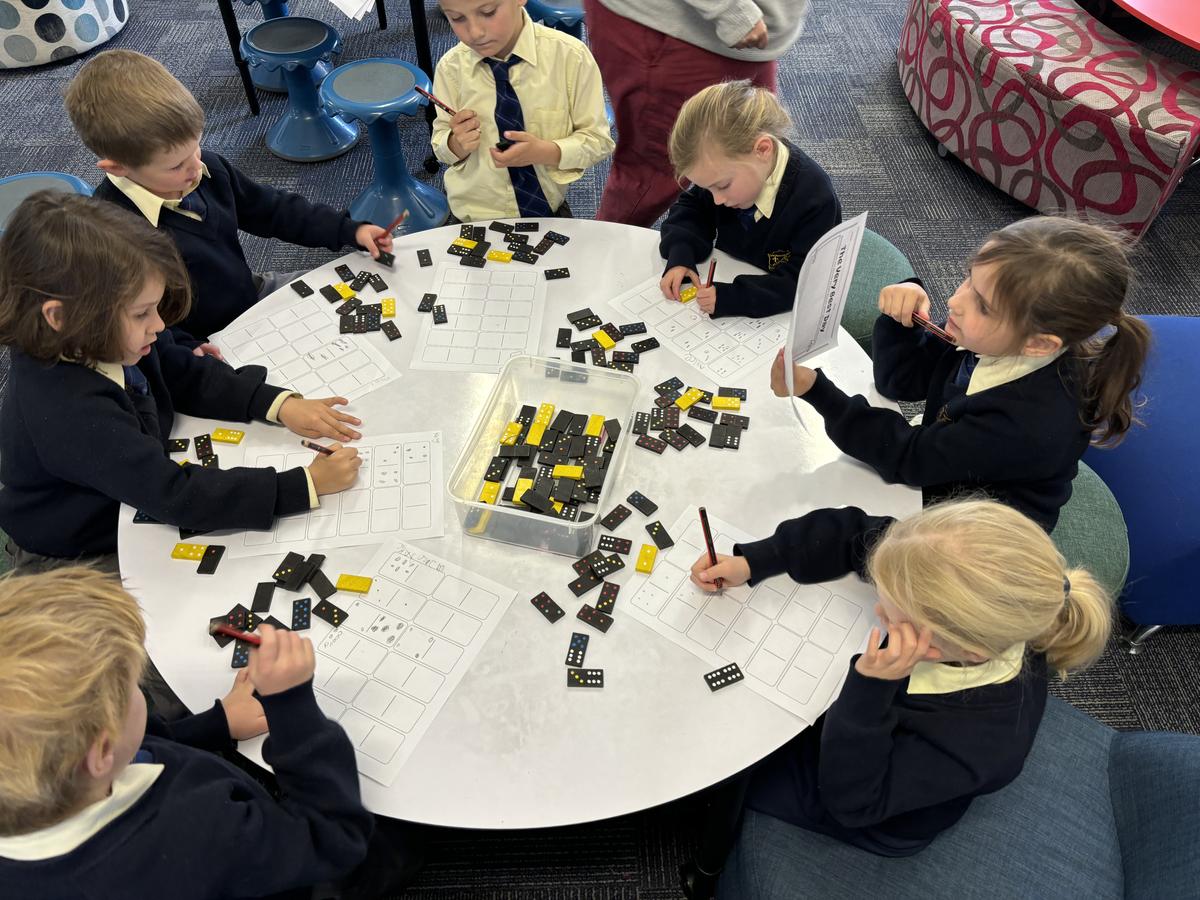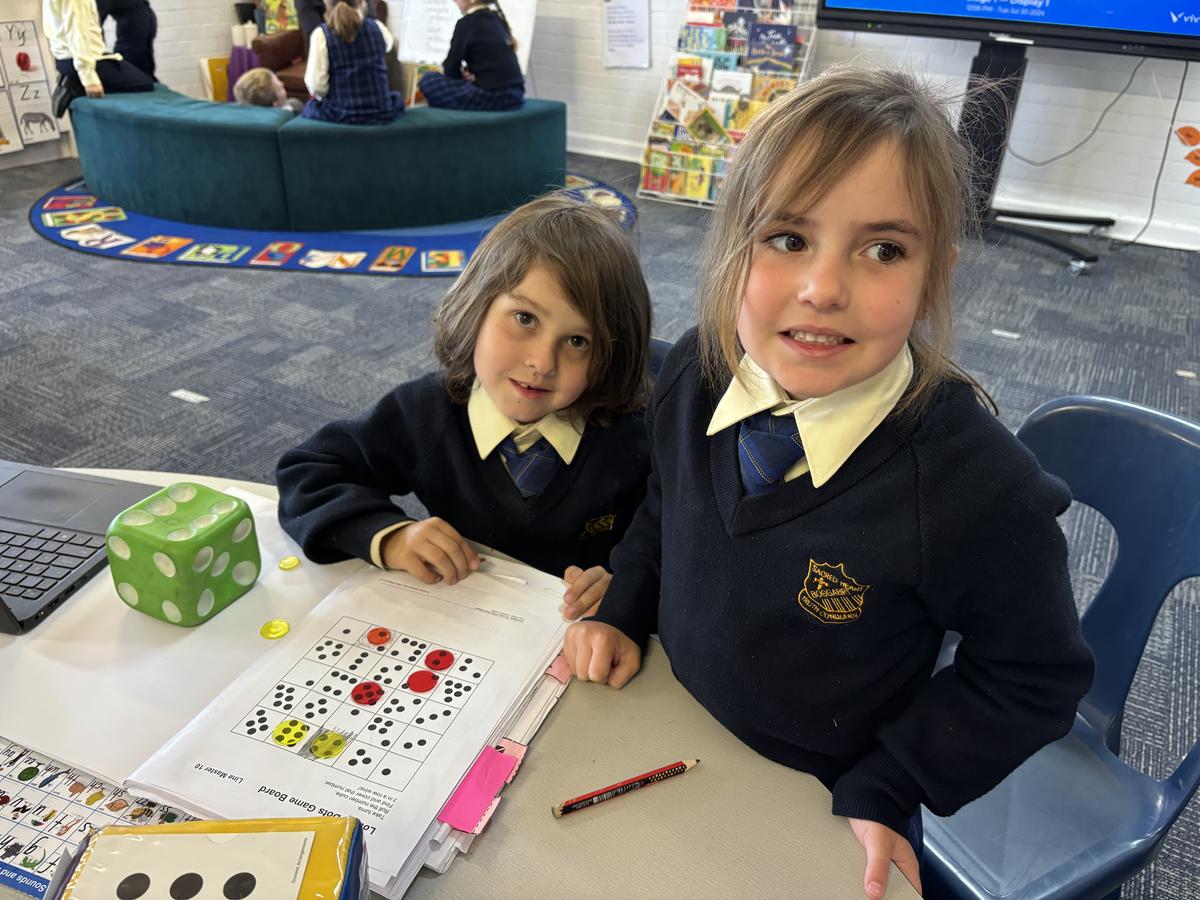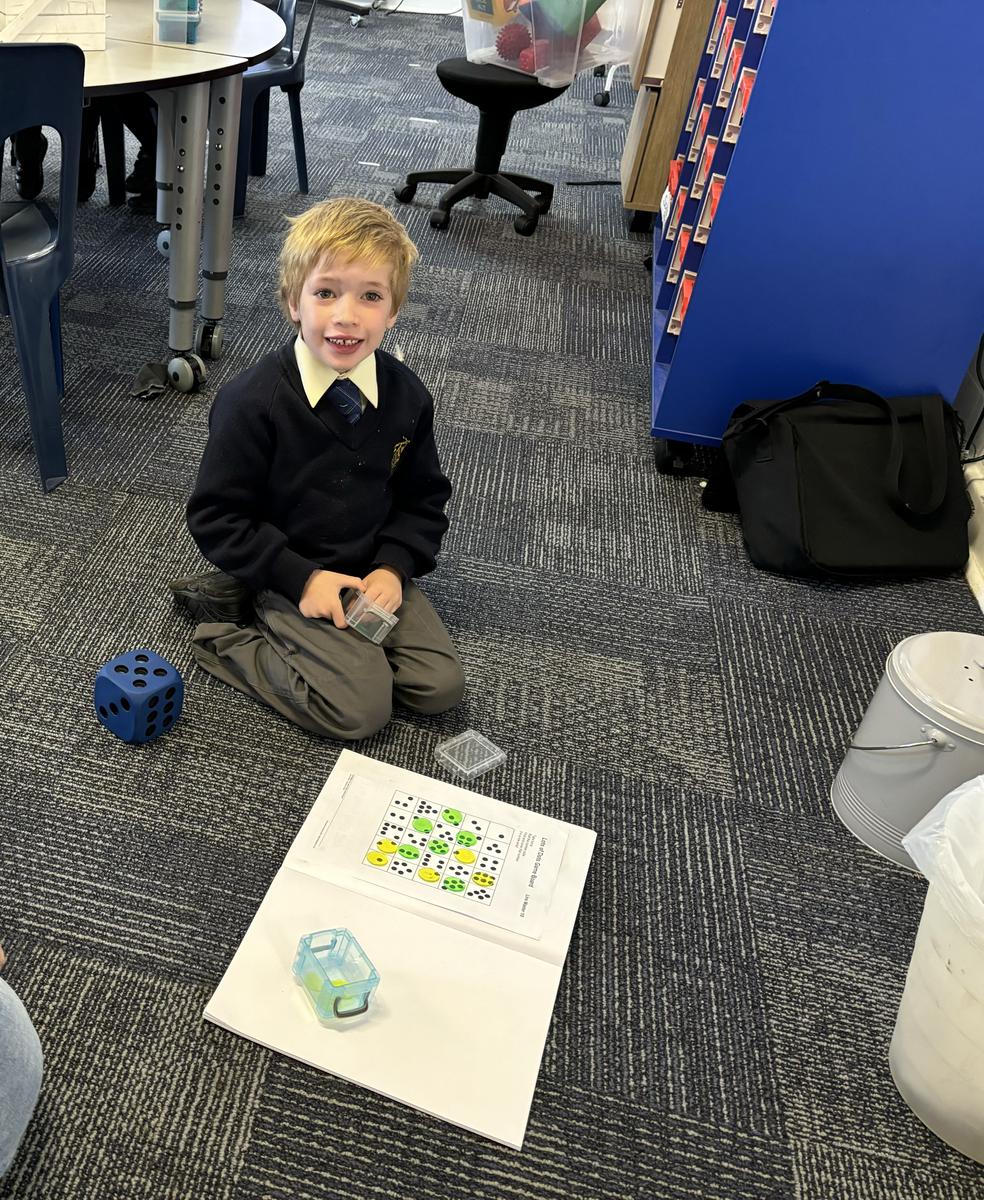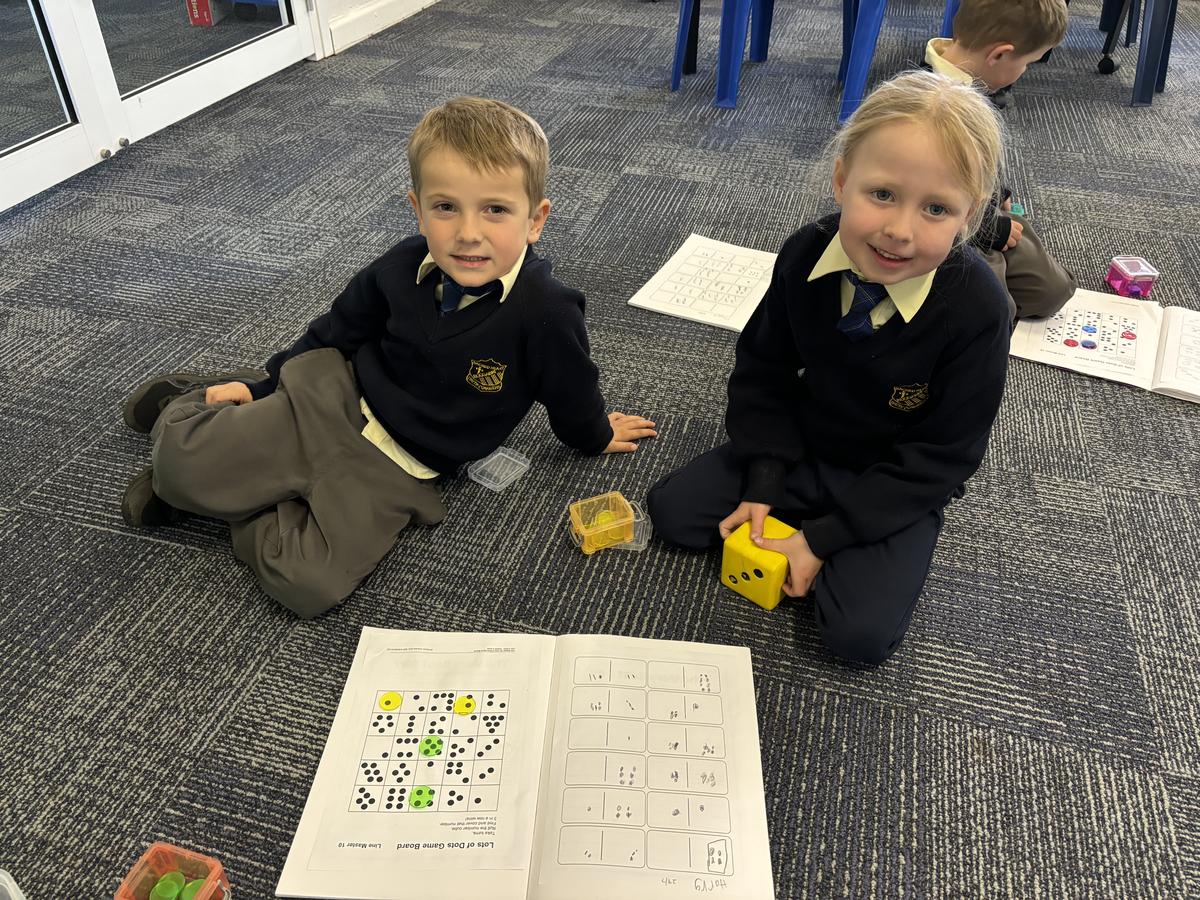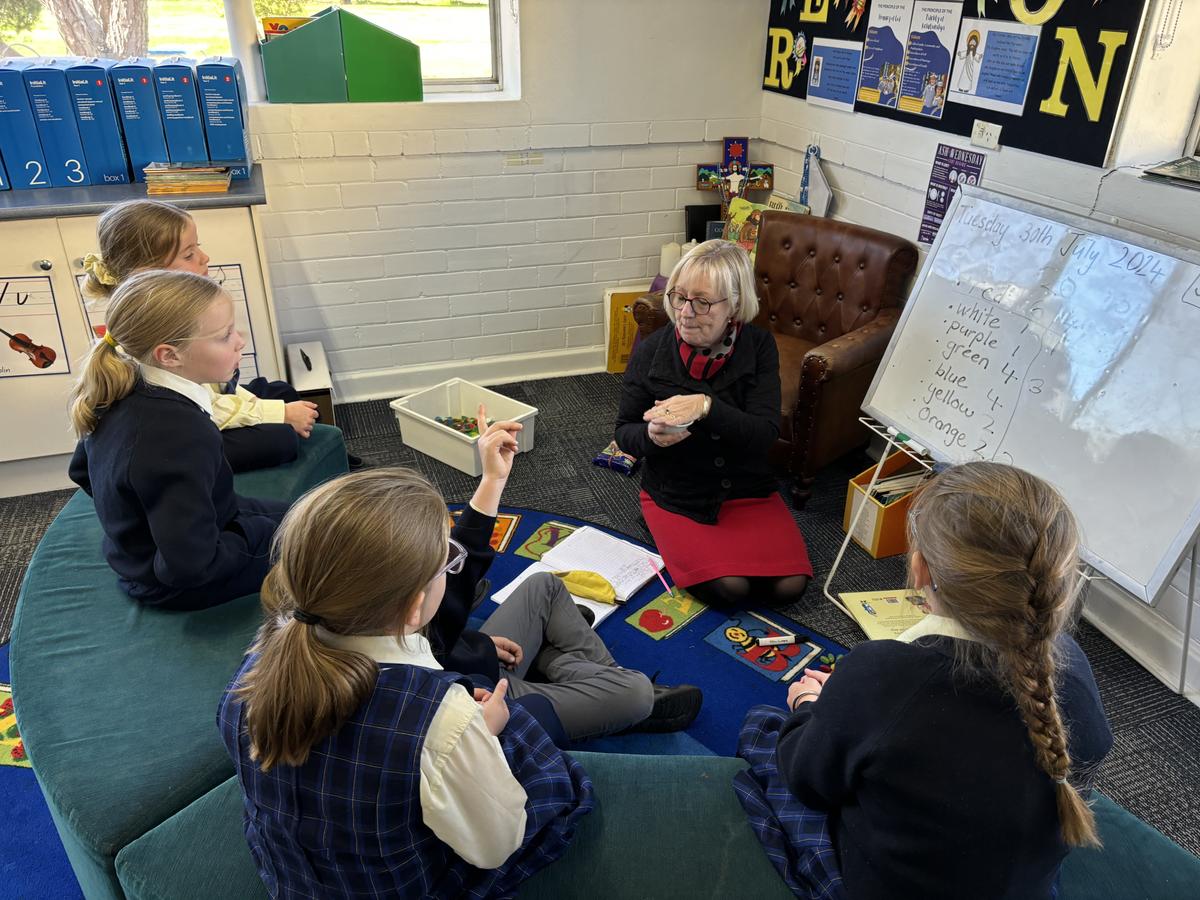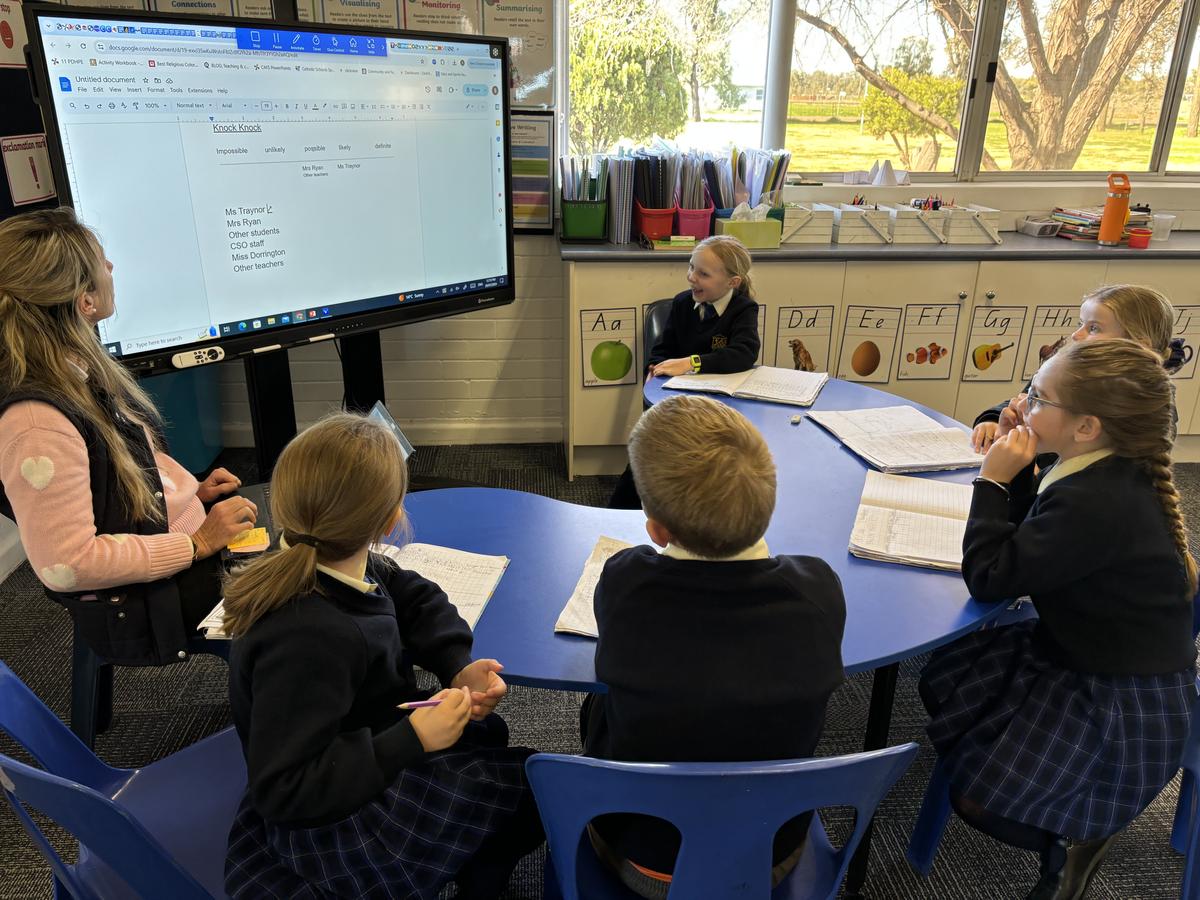Spotlight on the Classroom
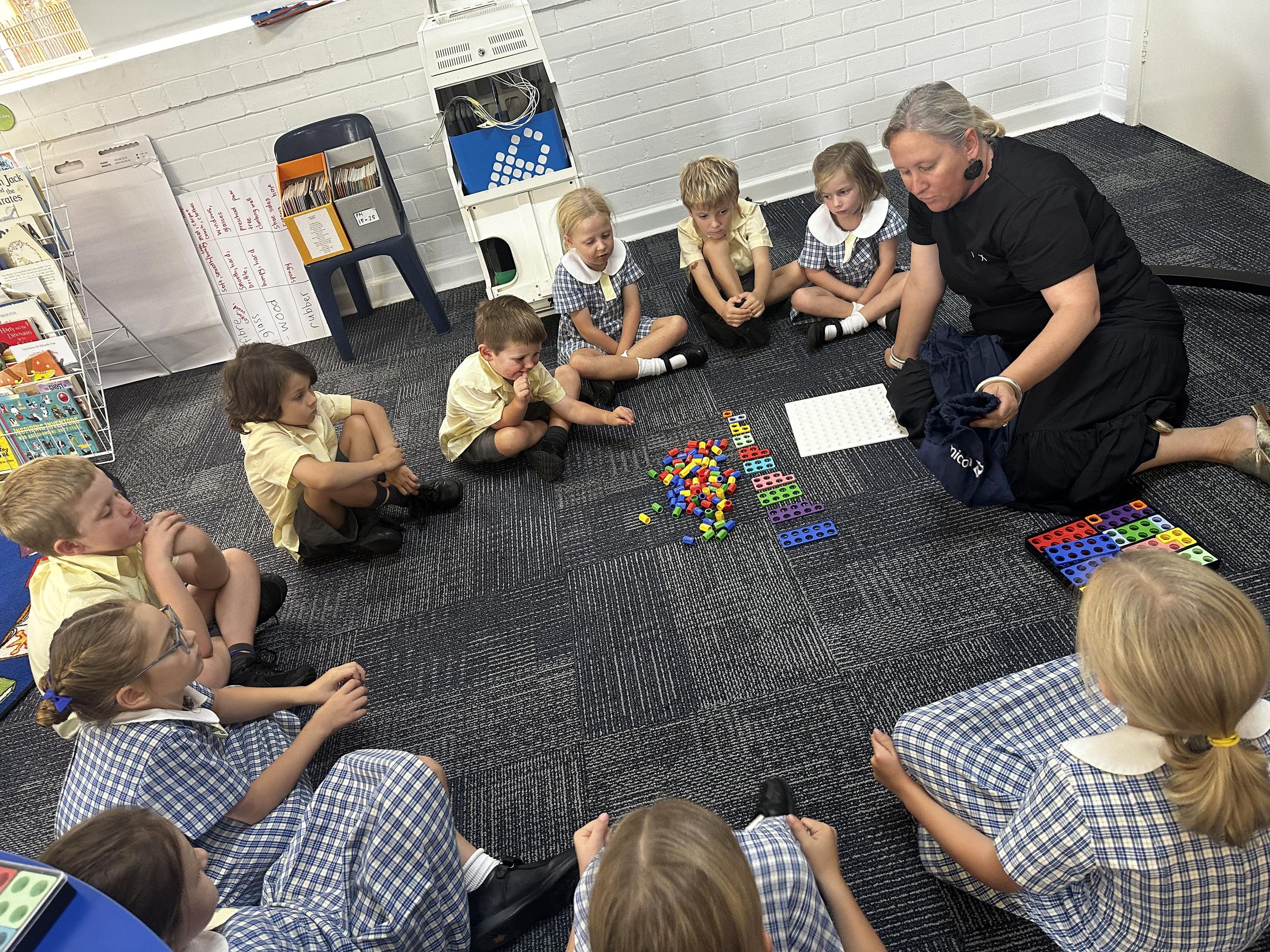
SPOTLIGHT ON K-2
Kinder - Subitising
Why is it important?
Subitising is a foundation for number sense and mental computation skills. Students who can subitise have stronger numeracy skills. Subitising enables us to use grouping structures when establishing the number of items in larger collections. Pattern recognition, sometimes referred to as ‘conceptual subitising’ (Clements, 1999), can assist students in developing the capabilities of recognising units and combining numbers.
TIPS FOR PARENTS:
Imagine looking at a dice and immediately knowing it shows five dots, or glancing at a handful of sweets and instantly recognising that there are eight. That's subitising in action! Put simply, subitising is the ability to instantly recognise the number of objects in a small group, without needing to count them.
Board games, especially when using dice, are a brilliant way of helping children to subitise and recognise key mathematical patterns. Play a game of rolling a die and see how quickly you can say the number without needing to count any dots.
Some children will relate much better to real life objects than dot patterns. Ask your child to collect some their favourite toys and then arrange them in familiar dice patterns.
Can they tell you how many there are without counting? Ask them to close their eyes and then rearrange the pattern or take one away, leaving just one toy.
Subitising can take a bit of practice, but mastering these mathematical skills at this early stage will help children succeed later both in maths and across the wider curriculum.
Year 1 and 2 - Chance and Data
Why is it important?
Many of the events and relations in people’s lives are well understood and entirely predictable. If we knock a glass over, the liquid in it spills. Other events and associations, such as a road accident or winning a lottery, are less predictable because they happen randomly. People know they might happen, but are uncertain if and when they will happen. Students in Years One and Two studied about the likelihood of events occuring last week and had some fun making predictions about the colours in a bag of jellybeans.
TIPS FOR PARENTS:
Talk about plans for family outings and the chances of the weather being favourable. Include possible, impossible, likely and unlikely scenarios in the discussion (e.g. Will there be a snow storm when we are having our picnic?)
Discuss other chance happenings that might occur (e.g. Do you think it is possible that Grandma will visit us tomorrow? What could happen at football today?) as well as how likely this is (e.g. Grandma might come to visit, but as she lives in Perth this is pretty unlikely).
Talk about chance when playing games (e.g. It’s possible that I will roll a six but not certain).
Suggested by NESA:
* using the language of chance such as certain, impossible, more likely, equally likely and less likely when describing everyday events. For example, I have an equally likely chance of tossing heads or tails on a coin flip, or we are in the Summer season, so it is certain to be hot again tomorrow.

